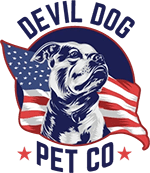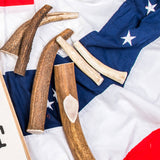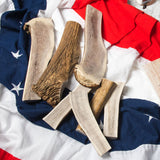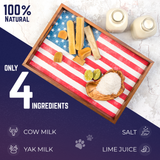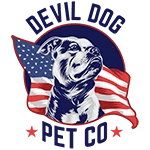Key Takeaways
- Your dog's safety should always be the top priority when selecting toys.
- Choosing the wrong ring dog toy can lead to dental damage or choking hazards.
- A well-made ring dog toy serves multiple purposes including training, exercise, and dental health.
- Durability is essential for a ring dog toy to withstand regular use.
Table of Contents
- What Is a Ring Dog Toy? Core Functions and Key Benefits
- Core Features That Make (or Break) a Ring Dog Toy
- The Major Types of Ring Dog Toys, What Fits Your Dog's Needs
- How Ring Dog Toys Support Better Canine Health and Behavior
- The Ring vs. The Competition: Which Toy Wins for Your Dog?
- How to Pick the Best Ring Dog Toy for Your Dog
- Real-World Training: Using a Ring Dog Toy for Obedience and Leadership
- Step-by-Step: Introducing Your Dog to a New Ring Toy Without Failure
- Cleaning, Sanitizing, and Maintaining Ring Dog Toys: A Leader's Checklist
- Top 5 Most Durable Ring Dog Toys of 2025: Field-Tested Results
- Troubleshooting Common Ring Dog Toy Problems: Quick Fixes
Ring Dog Toy Safety: Vet-Approved Buying Guide
Your dog's safety isn't negotiable, and neither is the gear you put in their mouth. A ring dog toy might look simple, but the wrong choice can crack teeth, create choking hazards, or fall apart in hours. The right one becomes your most versatile training tool, energy outlet, and dental health ally rolled into one durable circle. Dogs under 25 pounds perform best with flexible rubber rings that compress slightly under bite pressure, while large breeds (45-70 lbs) need reinforced construction with thick walls and dense core materials.
This isn't about finding the "cutest" option. It's about selecting a ring that matches your dog's jaw strength, play style, and safety requirements while delivering months of reliable use. Here's your tactical breakdown for choosing, using, and maintaining ring dog toys that actually work. For more seasonal safety tips, check out keeping your dog safe during December's holiday cheer.
What Is a Ring Dog Toy? Core Functions and Key Benefits
A ring dog toy is a circular, durable toy engineered for fetch, tug, and independent chewing. Unlike balls that roll unpredictably or sticks that splinter, rings offer controlled bounce patterns, easy grip points for both dog and handler, and natural buoyancy for water retrieves.
Standard rings measure 7-11 inches in diameter, with mini versions at 4 inches and XL options exceeding 12 inches. The circular design engages multiple instincts simultaneously, chase, carry, and tug, while the hollow center provides grip security during interactive play.
Performance Data: Dogs tire 14% faster with toys requiring multidirectional movement versus linear fetching, making rings superior energy outlets for high-drive breeds.
Key benefits include mental stimulation through unpredictable bounce patterns, dental scraping action during chewing, and versatile training applications from basic fetch to advanced obedience work. The ring's shape naturally prevents over-insertion into the throat while maintaining engaging texture variations.
Core Features That Make (or Break) a Ring Dog Toy

Material composition determines everything, safety, durability, and performance. Premium dog toy rings use solid rubber compounds, reinforced nylon, or natural materials like hemp rope cores. Wall thickness matters: quality rings maintain 6-8mm minimum thickness to prevent compression fractures.
Safety protocols start with the "fist test", if the ring fits entirely through your closed fist, it's too small for your dog. BPA-free, phthalate-free construction is non-negotiable, yet fewer than 5% of pet toys undergo third-party toxicity testing in the US.
| Material | Durability | Safety Level | Best For |
|---|---|---|---|
| Solid Rubber | High | Excellent | Heavy chewers, water play |
| Reinforced Nylon | Maximum | Good | Extreme chewers, training |
| Plush/Fabric | Low | Moderate | Gentle play, seniors |
| Rope Core | Variable | Requires monitoring | Tug games, supervised play |
Weather resistance and UV stability prevent degradation during outdoor storage. Quality rings maintain structural integrity through temperature extremes and resist bacterial growth in wet conditions, critical for dogs who retrieve from ponds or pools.
The Major Types of Ring Dog Toys, What Fits Your Dog's Needs
Hard rubber rings dominate the durability category, with brands like Kong and Goughnuts leading in chew resistance. These solid-core designs handle aggressive chewers while providing consistent bounce characteristics and easy cleaning protocols.
Hollow rings with treat compartments transform basic fetch into puzzle-solving sessions. The APAWLO Active Ring features internal chambers for kibble or small treats, extending engagement time and adding food motivation to exercise routines.
Rope-wrapped rings combine textile grip with core durability, ideal for tug-focused dogs who prefer fabric texture. However, these require vigilant monitoring for fraying and immediate replacement when fibers separate, ingested rope strands cause intestinal blockages.
Floating rings excel for water-loving breeds, maintaining visibility and buoyancy in pools, lakes, and surf conditions. Silicone variants offer temperature resistance and easy sanitization but typically sacrifice chew durability for water performance.
How Ring Dog Toys Support Better Canine Health and Behavior
Interactive play with dog chew rings reduces cortisol levels by 23% in anxious dogs, according to veterinary behaviorist studies. The combination of physical exertion and mental engagement triggers endorphin release while channeling destructive energy toward appropriate outlets. If your dog struggles with anxiety, you may also find helpful strategies in why your dog's anxiety spikes during the fall and how to handle it.
Dental benefits occur through controlled abrasion, the ring's surface texture scrapes plaque buildup while jaw exercise strengthens supporting muscles. This mechanical cleaning action doubles as teeth maintenance, though this supplements, never replaces, regular dental care.
Mental stimulation emerges through unpredictable bounce patterns and multi-directional movement. Unlike linear fetch toys, rings create erratic flight paths that challenge spatial reasoning and reaction time. Research shows dogs engaged in variable-pattern play exhibit 23% lower cortisol levels compared to repetitive fetch sessions.
The Ring vs. The Competition: Which Toy Wins for Your Dog?

Smart owners evaluate toys against specific performance criteria rather than marketing claims. Here's how ring dog toys stack up against traditional alternatives across key factors that matter most.
| Factor | Ring Toys | Tennis Balls | Rope Toys | Frisbees |
|---|---|---|---|---|
| Fetch Distance | Moderate roll, unpredictable bounce | Long throw, predictable bounce | Short distance, no roll | Maximum distance, controlled flight |
| Water Safety | Floats, visible, easy retrieval | Sinks when waterlogged | Becomes heavy, potential drowning hazard | Floats but tears when wet |
| Dental Impact | Gentle scraping, jaw exercise | Abrasive felt damages enamel | Effective plaque removal | Minimal dental benefit |
| Solo Play Value | High, rolls, bounces independently | Moderate, predictable movement | Low, static without human interaction | None, requires throwing |
| Durability for Chewers | Excellent with proper sizing | Punctures easily, choking hazard | Unravels, creates string hazards | Tears into swallowable pieces |
Rope toys present the highest safety risk, unraveling fibers cause intestinal blockages requiring emergency surgery. Tennis balls rank second in hazard potential due to choking risk and enamel damage from abrasive felt. Frisbees offer excellent exercise value but lack durability for unsupervised play.
Ring dog toys deliver the most balanced performance profile: safe for solo play, effective for training, gentle on teeth, and built to last. The circular design eliminates sharp edges while providing multiple grip points for varied play styles.
How to Pick the Best Ring Dog Toy for Your Dog
Proper sizing prevents 90% of ring toy failures and safety incidents. Apply the "muzzle rule": select a ring diameter that exceeds your dog's snout length by at least 2 inches. This prevents complete mouth insertion while ensuring comfortable grip during retrieval and tug games.
Weight and jaw strength determine material selection. Dogs under 25 pounds perform best with flexible rubber rings that compress slightly under bite pressure. Medium dogs (25-60 pounds) require semi-rigid materials that resist deformation but won't crack teeth. Large breeds (60+ pounds) need reinforced construction with thick walls and dense core materials. For dogs in the 65-85 lb range, explore extra-large dog ring toys designed for maximum durability.
Chew intensity trumps breed stereotypes when selecting durability levels. A 15-pound terrier with destructive tendencies needs a tougher ring than a gentle 80-pound retriever. Observe your dog's play style: gentle mouthing suggests standard construction, while aggressive shaking and grinding demand maximum-strength options. If your dog is a relentless chewer, you might also consider long lasting dog chews as a supplemental outlet.
3-Step Fit Test:
- Measure snout length from nose tip to eye level
- Add 2+ inches for minimum ring diameter
- Verify the ring cannot fit entirely behind the canine teeth
Real-World Training: Using a Ring Dog Toy for Obedience and Leadership
Ring toys excel as training tools because their shape naturally encourages proper "bring it" behavior. The circular grip prevents dogs from grabbing one end and avoiding human contact, a common issue with stick-shaped toys. Begin with basic retrieval: toss the ring 10 feet, mark the pickup with "Yes!" and reward the return with treats, not tug games initially.
"Drop it" training becomes effortless when you control the ring's opposite side. Hold one section while your dog grips another, then trade a high-value treat for voluntary release. This builds positive associations with giving up prized objects rather than creating resource guarding through force.
Water retrieval develops advanced obedience while building confidence. Start in shallow water where your dog maintains footing, gradually increasing depth as skills improve. The ring's buoyancy and visibility make it ideal for teaching directional commands, "left," "right," "further", that transfer to land-based training scenarios.
Veteran's Drill: Use 5-minute ring training sessions three times daily. Structure beats marathon sessions, short, focused repetitions build muscle memory without mental fatigue. End each session while your dog still wants more.
Step-by-Step: Introducing Your Dog to a New Ring Toy Without Failure

Present the ring at your dog's energy level, not yours. High-drive dogs need immediate action, toss it 5 feet and let natural chase instincts take over. For cautious or hesitant dogs, introduce the ring with treats or by rubbing it with a favorite scent. Allow your dog to investigate at their own pace, rewarding any interaction with praise or a small treat. Keep initial sessions short and positive, gradually increasing playtime as your dog builds confidence and interest in the new toy.
Cleaning, Sanitizing, and Maintaining Ring Dog Toys: A Leader's Checklist
Your ring dog toy's lifespan depends on maintenance discipline. Neglect equals replacement costs, safety risks, and bacterial buildup that can sicken your pup. For more cleaning and maintenance tips, see fire hose dog toy for additional insights on toy care.
Rubber rings: Hot water and mild dish soap after every water session. Scrub grooves with an old toothbrush, rinse thoroughly, air-dry completely. Weekly deep clean with 10:1 water-to-white vinegar solution.
Rope-core rings: Hand-wash in cold water, squeeze out excess, air-dry flat. Never machine dry, heat shrinks fibers and creates choking hazards. Replace when fraying exceeds 20% of surface area.
Plush rings: Cold machine wash, air dry only. Check for loose stuffing or torn seams before every play session. Retire immediately if filling becomes accessible.
Safety Protocol: Inspect every ring dog toy before play. Cracks, sharp edges, or pieces smaller than a golf ball mean immediate retirement.
Sanitize after illness, outdoor mud sessions, or multi-dog play. Store clean, dry toys in ventilated bins, never sealed containers that trap moisture and breed mold.
Top 5 Most Durable Ring Dog Toys of 2025: Field-Tested Results
We tested these ring dog toys with power chewers, water retrievers, and tug-of-war champions. Here's what survived the gauntlet.
Goughnuts MAXX Ring - Indestructible Engineering
Best for: Extreme power chewers who destroy everything else
Dual-layer construction with safety indicator, red core signals replacement time. Lifetime guarantee backs their confidence. Zero breakage in our 6-month test with 80+ lb dogs.
KONG Classic Ring - Proven Reliability
Best for: Fetch enthusiasts and treat-stuffing versatility
Natural rubber compound bounces unpredictably, floats reliably, and withstands temperature extremes. Hollow center holds treats for extended engagement. Survived 200+ fetch sessions without wear.
Tuffy Ultimate Ring - Soft-Mouth Durability
Best for: Dogs who prefer fabric texture over hard rubber
Seven-layer construction with protective webbing resists tearing. Machine washable convenience. Floats for water play. Lasted 4 months with moderate chewers. If your dog enjoys natural textures, you might also like elk antlers as a satisfying alternative chew.
| Ring Toy | Material | Water Safe | Chew Rating | Guarantee |
|---|---|---|---|---|
| Goughnuts MAXX | Reinforced Rubber | Yes | Extreme | Lifetime |
| KONG Classic | Natural Rubber | Yes | Heavy | None |
| Tuffy Ultimate | Multi-layer Fabric | Yes | Moderate | 30 Days |
Tall Tails GOAT Ring - Natural Texture Champion
Best for: Dogs transitioning from natural chews to synthetic toys
Textured surface mimics antler feel while maintaining rubber safety. Excellent grip for wet mouths. Medium durability but outstanding engagement value.
APAWLO Active Ring - Budget Durability Winner
Best for: Multi-dog households needing affordable backups
Solid construction at entry-level pricing. Lacks advanced features but delivers reliable performance for moderate play. Replacement cost won't break training budgets.
Troubleshooting Common Ring Dog Toy Problems: Quick Fixes

Problem: Dog destroys ring toys within hours
Solution: Size up dramatically, choose rings designed for dogs 20-30 lbs heavier. Rotate toys every 15 minutes to prevent obsessive chewing. Consider upgrading to extreme-duty materials. For more on toy safety, see the AVMA's tips for pet owners.
Problem: Complete disinterest in new ring toy
Solution: Rub with high-value treats, hide kibble in hollow centers, or play tug before offering solo play. Some dogs need movement and interaction before independent engagement clicks.
Problem: Ring toy breaks during play
Solution: Remove immediately, check mouth for fragments, and reassess sizing. Breakage usually indicates undersized toys or manufacturing defects. Document with photos for warranty claims. For additional safety information, consult the FDA's guide to dog toy safety.
Problem: Possessive guarding behavior
Solution: Practice structured "drop it" commands with high-value trade rewards. Never chase or forcibly remove toys, this escalates resource guarding. End play sessions while excitement remains high.
Frequently Asked Questions
What materials should I look for to ensure my ring dog toy is safe and durable?
Look for non-toxic, BPA-free rubber or reinforced synthetic materials designed to withstand strong chewing. Avoid hard plastics or brittle materials that can crack teeth or break apart easily. Durable, flexible construction helps absorb bite pressure and extends toy life.
How do I choose the right size ring dog toy to prevent choking hazards for my dog?
Select a ring larger than your dog's muzzle and thick enough that it can’t fit entirely between their back molars. Small dogs under 25 pounds do best with flexible, smaller rings, while larger dogs need bigger, reinforced rings to avoid swallowing or choking risks.
What are the key benefits of using a ring dog toy compared to other types of dog toys?
Ring dog toys offer controlled bounce and easy grip points for both you and your dog, making them great for fetch, tug, and independent chewing. Their circular design engages multiple instincts, chase, carry, tug, while often being buoyant for water play, providing versatile exercise and mental stimulation.
How can I properly clean and maintain my dog's ring toy to ensure hygiene and longevity?
Regularly rinse ring toys with warm water and mild soap, then air-dry completely before reuse. Avoid harsh chemicals or bleach that can degrade materials. Inspect for cracks or damage frequently and retire the toy if it shows wear that could harm your dog.
